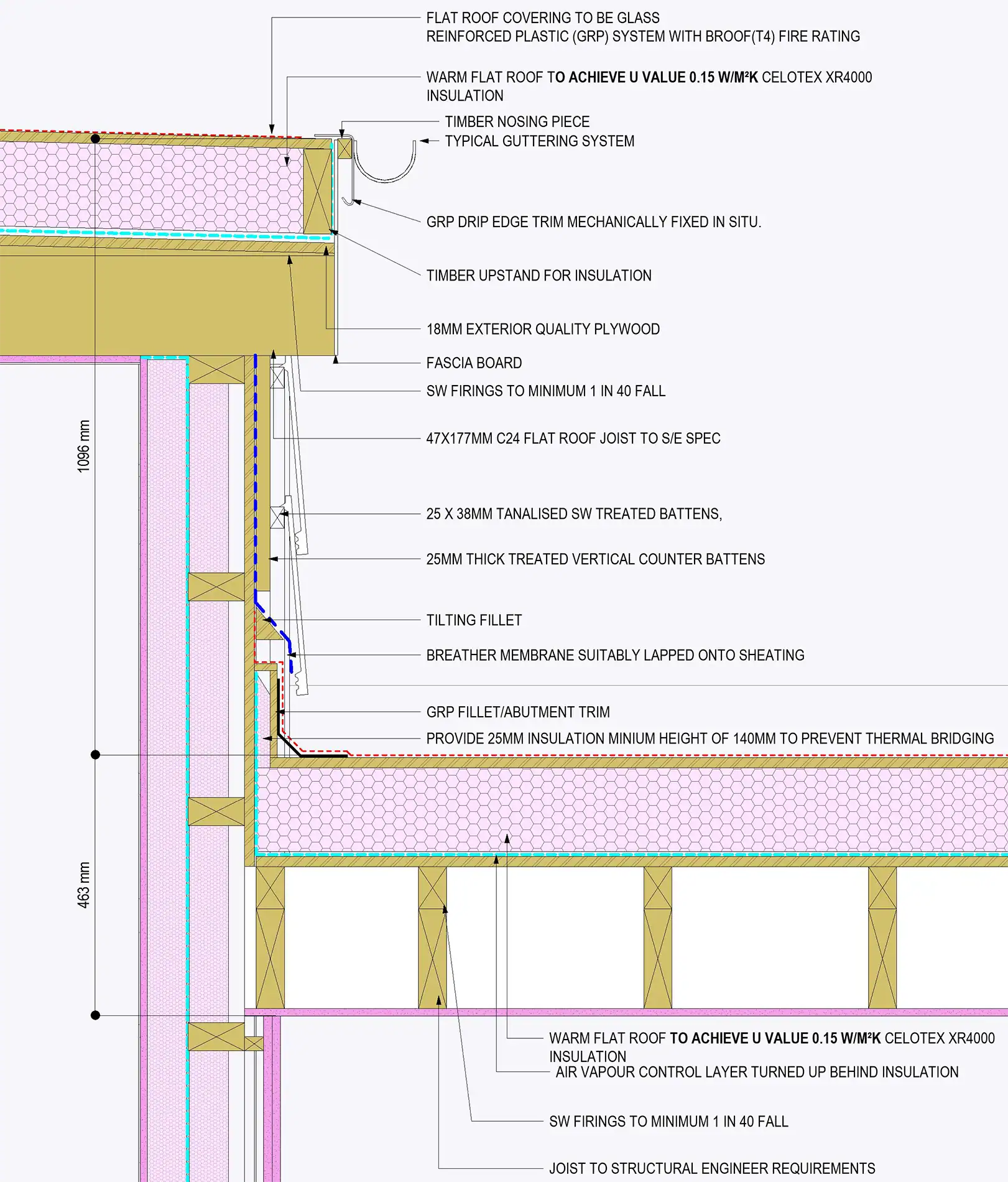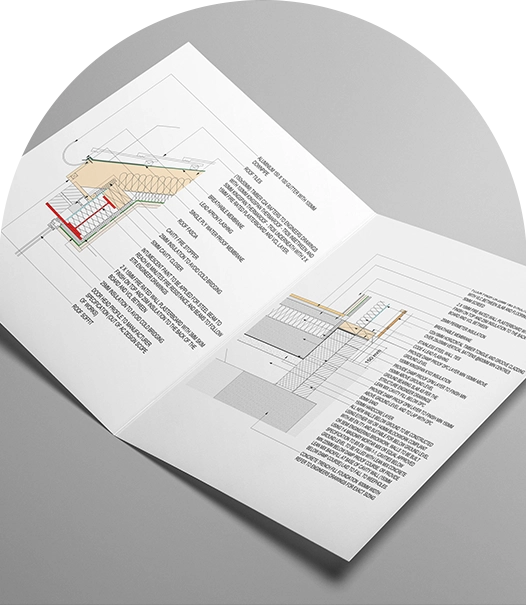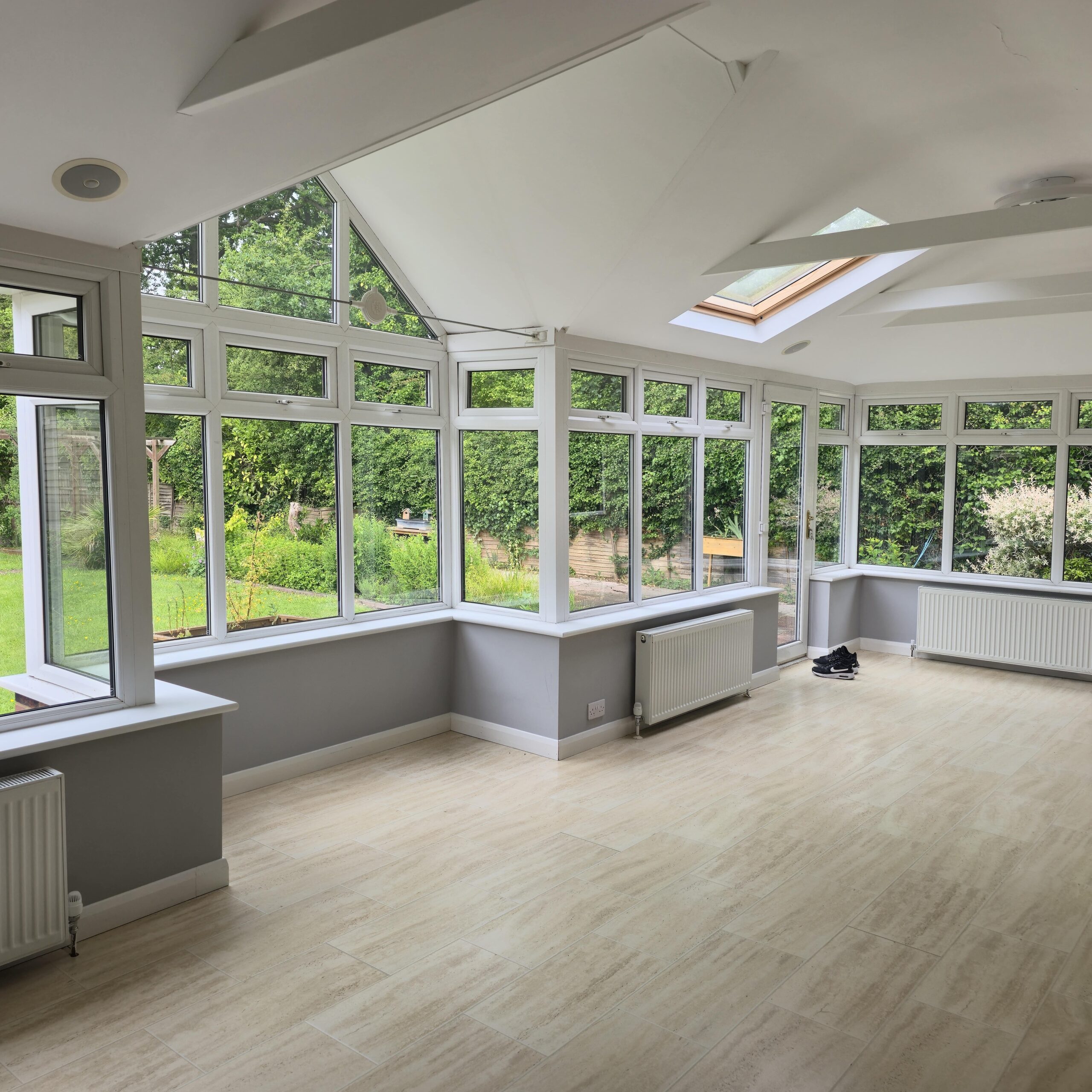Quick Answer: HMO Planning Permission Requirements
In most cases, you do not need planning permission to convert a family home (C3 use class) into a small HMO for 3-6 unrelated people (C4 use class). This falls under permitted development rights through “Class L” of the General Permitted Development Order. However, you will need planning permission if:
- Your property is in an area with an Article 4 direction (currently affecting parts of 56 local authorities, including 9 London boroughs)
- You want to create an HMO for 7 or more people (considered “sui generis”)
- Your property already has planning conditions restricting its use
- You need to make significant structural changes to the building
Converting your property to an HMO without required planning permission can result in enforcement action and fines up to £20,000, while operating without proper HMO licensing can lead to additional penalties up to £30,000.
Essential HMO Planning Application Information
Planning Permission Costs and Timeframes
If you do need planning permission for your House in multiple occupation conversion, you should be aware of these key details:
- Application Fee: £462 for a change of use application (as of 2025
- Additional Consultancy Costs: £800-£2,500 for professional planning assistance
- Processing Time: 8-12 weeks is the standard determination period (though 69% of councils report backlogs)
- Appeal Process: If refused, appeals to the Planning Inspectorate take approximately 26 weeks with a 33% success rate nationally
How to Check if Planning Permission is Required for Your Property
To determine if your specific property needs planning permission for HMO conversion:
- Check Article 4 Direction Status: Contact your local planning department or check their website to see if your area is covered by an Article 4 direction restricting HMO development
- Review Property History: Request previous planning permissions through your local council’s planning portal to check for any conditions restricting future use
- Calculate Occupancy Plans: If you intend to house more than 6 unrelated individuals, you will always need planning permission regardless of location
- Analyze Proposed Changes: Substantial alterations to the property structure may require separate planning permission even if the HMO conversion itself doesn’t
- Use Planning Portal Tools: The government’s Planning Portal website offers interactive tools to help determine if your specific conversion requires permission
Converting a C3 Property into an HMO: Planning Permission Requirements
Converting a standard dwelling house (C3) or flat to a small HMO (for up to six unrelated individuals) generally doesn’t require planning permission under permitted development rights. This conversion falls under “Class L” of permitted development, making it an attractive option for property investors looking to maximize rental yields quickly.
However, there are important exceptions that every investor must be aware of:
- Article 4 Directions: If your local council has implemented an Article 4 direction, this removes permitted development rights, meaning you will need planning permission for the change of use from a C3 dwelling house to a C4 HMO. Many councils in high-density student areas have implemented these restrictions.
- Previous Planning Restrictions: If a previous planning permission has revoked Class L rights for your property, you’ll need to apply for full planning permission regardless of other factors.
- Over Six Occupants: If your HMO will accommodate more than six residents, it falls under the Sui Generis category and will require planning permission regardless of Article 4 status. Large HMOs (7+ residents) always require full planning permission.
- Building Works: If significant structural changes are required beyond simple internal alterations, additional planning permissions may be needed alongside the change of use application.
- For really large HMOs or to add extra bedrooms, consider a double‐storey extension his will need full planning permission plus Building Regs approval.
Understanding Use Classes for Property Investors
In the UK planning system, properties are classified into different ‘use classes’ that determine their legal use. Understanding these classifications is essential for compliance and avoiding costly enforcement actions:
- C3 (Dwelling Houses): Properties intended for single-family residential use, including houses and flats occupied by single persons, families, or up to 6 residents living together as a single household (including a household with up to 6 foster children)
- C4 (Houses in Multiple Occupation): Properties specifically designated for small HMO use (3-6 unrelated occupants who share basic amenities)
- Sui Generis: Large HMOs with more than 6 unrelated occupants fall outside the standard use classes and are considered “sui generis” (of their own kind). These always require specific planning permission
Understanding which category your investment property falls into is crucial for compliance with planning regulations and directly impacts your ability to operate legally and maximize returns. Many successful HMO investors focus on the C4 category as it offers the best balance between rental yield and regulatory complexity.
Article 4 Directions for HMOs: Impact on Property Investment Strategy
What is an Article 4 Direction?
An Article 4 direction is a powerful planning tool used by local authorities to restrict permitted development rights in specific areas. These directions are critically important as they require property owners to obtain planning permission for HMO conversions that would otherwise be permitted development. This additional hurdle can significantly impact investment timelines and costs.
Why Are Article 4 Directions Implemented?
Local authorities implement Article 4 directions specifically targeting HMOs to:
- Manage the concentration and distribution of HMOs more effectively
- Improve residents’ living standards in both HMOs and surrounding properties
- Maintain balanced communities with diverse housing types
- Control the character and appearance of residential neighborhoods
HMO Article 4 Directions: The Evidence Base
Research conducted by numerous local authorities indicates that an over-concentration of HMOs with HMO design and compliance challenges can lead to various issues affecting neighborhood sustainability:
- Poor accommodation standards within HMOs themselves
- Loss of neighborhood character and community cohesion
- Reduced environmental quality and property maintenance
- Increased noise complaints and disruption to established residents
- Anti-social behavior particularly in student-dominated areas
- Loss of single-family homes in residential neighborhoods
- Higher reported crime rates in areas with high HMO density
- Parking problems due to multiple car ownership per property
- Dominance of private renting leading to transient populations
- Strain on local services including waste collection and management
- Changes to local retail provision catering to temporary residents
London Councils with Article 4 Directions for HMOs: Where Investment Strategy Needs Adjustment
The following London councils have implemented Article 4 directions restricting permitted development rights for HMOs, significantly impacting investment strategies in these areas:
Use our interactive map to see which councils have Article 4 directions in place. Note: councils change policies regularly, so it’s best to review the official council website for the most current information. Yellow markers on the map indicate areas where there are partial HMO restrictions.
- Barking and Dagenham: Whole borough coverage since 2019
- Barnet: Whole borough coverage
- Greenwich: Entire borough under Article 4 protection
- Haringey: Comprehensive Article 4 direction in force
- Hillingdon: Partial coverage (see official HMO map on council website)
- Lewisham: Southern portion of the borough, with the rest joining in September 2023
- Newham: Whole borough coverage
- Southwark: Comprehensive Article 4 direction
- Waltham Forest: Complete borough-wide restrictions
Many investors mistakenly assume these Article 4 directions make HMO investments impossible in these areas. In reality, they simply add an additional planning hurdle – applications for change of use from C3 to C4 will be considered on their planning merits. Success rates vary significantly between boroughs, with some granting around 60-70% of applications while others have much lower approval rates.
Important Note for Investors: Article 4 directions may not cover entire boroughs and can vary significantly in scope and enforcement approach. Always check your specific council’s website or consult with specialized HMO planning professionals before proceeding with HMO conversions or acquisitions. The financial impact of getting this wrong can be substantial, as retrospective planning applications have much lower approval rates than proactive ones.
Obtaining a Certificate of Lawful Development Step-by-Step Guide
The HMO Certificate Application Process
- Gather Evidence: Collect comprehensive documentation demonstrating the property’s existing use as an HMO and all relevant planning history.
- Prepare Supporting Statement: Draft a detailed planning statement explaining how the evidence proves lawful use as an HMO.
- Complete Application Forms: Fill out the correct local authority application forms (usually a 191 application).
- Pay Application Fee: Current fees typically range from £462 for a residential Certificate of Lawfulness application.
- Submit Application: Apply through your local planning authority with all necessary documentation and fees.
- Assessment Period: The authority will assess whether the property meets legal requirements for HMO use (typically 8 weeks).
- Decision: Receive either approval, rejection, or a request for further information.
For Unauthorized HMOs (Existing Use Without Planning Permission)
For a successful Certificate of Lawful Development application for unauthorised HMOs, you should provide as many of these documents as possible:
- Tenancy agreements: Dating back to prove continuous HMO use for the required period (10 years for unauthorized development without planning permission)
- Council tax records: Showing multiple occupancy status
- Utility bills: Demonstrating separate billing arrangements or usage consistent with multiple occupants
- Floor plans: Showing room layouts suitable for HMO use
- Photographs of the property: Interior and exterior showing HMO features (multiple bedrooms, locks on doors, etc.)
- Statements from neighbors or tenants: Sworn affidavits confirming HMO use
- Electoral register records: Showing multiple unrelated occupants
- HMO license applications: Even if previously rejected
- Property advertisements: Showing the property marketed as an HMO
- Receipts for HMO-specific work: Fire safety systems, multiple kitchen facilities, etc.
For Standard Lawful Development Certificates (Proposed Use or Lawful Existing Use)
For standard applications where you’re not trying to legitimize unauthorized use, evidence requirements typically focus on:
- Existing planning permissions: Showing compliance with current planning status
- Building regulations approval: Demonstrating the property meets safety standards
- Floor plans: Showing the proposed or current layout is suitable for HMO use
- Planning statement: Explaining how the proposed or existing use complies with relevant planning policies
- HMO license details: If already licensed or eligible for licensing
Important Note: The time period for proving lawful use for an HMO operating without required planning permission is 10 years of continuous use, as established by the Levelling Up and Regeneration Act. This 10-year rule applies to all unauthorized HMO uses seeking to obtain a Certificate of Lawful Existing Use through the passage of time.
HMO Regulation: Important Proposed Legislative Changes
The “Levelling Up and Regeneration Bill,” introduced to Parliament in May 2022, proposes significant changes to HMO regulations that could substantially impact property investors and existing HMO landlords:
- Extended Enforcement Period for Unauthorized HMOs: The planning enforcement period may be extended from 4 years to 10 years, meaning applicants for Certificates of Lawfulness might need to demonstrate 10 years of continuous HMO use rather than the current 4-year requirement. This change would make it significantly harder to legitimize unauthorized HMOs through the passage of time.
- Enforcement Warning Notices for HMO Planning Violations: Councils may gain enhanced authority to issue enforcement warning notices before proceeding to full enforcement notices, giving property owners 14-21 days to address planning contraventions. While this creates an intermediate step before formal enforcement, it also streamlines the enforcement process overall.
- Increased Penalties for Non-Compliance: The bill proposes substantially increased fines for operating unauthorized HMOs, particularly in Article 4 areas.
- Mandatory National HMO Registration: A potential national register of all HMOs to improve tracking and enforcement across local authority boundaries.
These proposed changes signal a clear direction toward tighter regulation of the HMO sector, making early compliance and proper documentation increasingly important for property investors focusing on this market segment.
HMO Licensing Requirements: Beyond Planning Permission
Understanding Mandatory HMO Licensing
HMO are subject to licensing requirements, Mandatory HMO licensing applies to properties that accommodate 5 or more unrelated individuals, regardless of the number of storeys. This licensing requirement operates independently of planning permission and exists to ensure minimum safety standards. Key requirements typically include:
- Suitable fire safety measures including interconnected smoke alarms
- Emergency lighting in common areas
- Fire doors with self-closing mechanisms
- Adequate kitchen and bathroom facilities for the number of occupants
- Minimum bedroom sizes (6.51m² for single occupancy and 10.22m² for double occupancy, as specified in the Housing Act 2004)
- Gas safety certificates renewed annually
- Electrical safety certificates (EICR) renewed every 5 years
- Proper waste management arrangements
It’s important to understand that these minimum room size requirements are part of the HMO licensing system and are completely separate from any planning considerations. You may receive planning permission for an HMO conversion but still fail to meet the licensing standards if rooms are too small.
Additional HMO Licensing Powers: Local Variations
Councils have significant discretionary powers to extend licensing beyond the mandatory national scheme:
- Selective Licensing: Applies to all privately rented properties in designated areas regardless of size or occupancy. Often implemented in areas with low housing demand or significant anti-social behavior problems.
- Additional Licensing: Targets specific types of HMOs not covered by mandatory licensing (such as 3-4 person HMOs) in particular areas or across the entire local authority. Common in university towns and areas with high concentrations of smaller HMOs.
Many London boroughs have implemented additional licensing schemes alongside Article 4 directions, creating a dual system of planning and licensing controls.
Penalties for HMO Non-Compliance: The Financial Risks
The consequences of non-compliance with HMO licensing requirements are severe:
- Failing to obtain the required HMO license can result in fines of up to £30,000 under the most recent regulations
- Rent Repayment Orders may require landlords to repay up to 12 months of rent
- Inability to serve valid Section 21 eviction notices while operating an unlicensed HMO
- Criminal prosecution for serious or repeated violations
- Placement on the rogue landlord database affecting future licensing applications
Combined planning and licensing penalties can easily exceed £50,000 for a single property, highlighting the critical importance of compliance with both regulatory systems.
Case Study: HMO Planning Permission Success and Failure
Success Story: Small HMO Conversion in Brighton
A landlord in Brighton wanted to convert a 3-bedroom semi-detached house into a 5-bedroom HMO. Despite Brighton & Hove having an Article 4 direction, the application was approved because:
- The property was on a main road with diverse property types
- HMO concentration on the street was below 10% (council threshold is 20%)
- The application included detailed sound insulation plans
- Additional bicycle storage was proposed instead of car parking
- A professional management plan was submitted showing how potential issues would be addressed
Key Takeaway: Even in Article 4 areas, well-prepared applications that address common concerns can succeed. The landlord reported a 13% higher rental yield compared to traditional letting.
Failure Case: HMO Application Rejected in Manchester
A property investor in Manchester sought to convert a terraced house in Fallowfield to a 6-person HMO. The application was rejected for multiple reasons:
- The street already had 26% HMO concentration (above council’s 10% threshold)
- Insufficient waste management provision
- Inadequate noise mitigation measures for adjoining properties
- Limited parking on an already congested street
- Bedroom sizes that fell below Manchester’s enhanced standards
Key Takeaway: Understanding local thresholds and policies before purchase is critical. This investor lost approximately £4,200 in abortive costs and had to revert to a traditional letting model with 38% lower returns than projected.
Real-World HMO Planning Challenges and Solutions
Most Common HMO Planning Objections and How to Address Them
Based on analysis of 500+ HMO planning applications across the UK, these are the most common objections and effective solutions:
- Parking Concerns (67% of objections)
- Solution: Detailed parking surveys showing capacity, implementing car-free agreements for tenants, providing cycle storage
- Noise/Anti-Social Behavior (58% of objections)
- Solution: Enhanced sound insulation specifications, professional management plans, tenant vetting procedures
- Waste Management (43% of objections)
- Solution: Dedicated bin storage areas, contracted waste management services, tenant education programs
- Over-Concentration (39% of objections)
- Solution: Commissioned research on actual HMO percentages, socio-economic impact assessments showing community benefits
- Property Appearance (31% of objections)
- Solution: Limited external changes, landscaping improvements, high-quality materials for any modifications
Conclusion: Navigating HMO Planning Permission Successfully
Converting a property into an HMO can provide significantly higher rental yields (typically 9-15% compared to 3-6% for standard rental properties), but it requires careful navigation of both planning considerations and licensing requirements. By understanding the regulations outlined in this comprehensive guide, property owners can:
- Determine quickly whether planning permission is required for their specific property
- Properly document existing HMO use to support Certificate of Lawful Development applications
- Design properties that meet both planning and licensing requirements from the outset
- Budget appropriately for the regulatory compliance costs
- Develop a sustainable, compliant HMO operation that maximizes returns while minimizing legal risks
Remember that unauthorized HMO use carries significant risks, with councils becoming increasingly proactive in enforcement – data shows a 47% increase in HMO enforcement actions since 2018. The cost of retrospective planning applications is also typically 2-3 times higher than proactive applications, with a significantly lower approval rate (22% versus 56% for standard applications).
For specific advice regarding your property, always consult with a specialized HMO planning consultant who understands both the planning and licensing aspects of HMO regulation in your specific local authority.
This article was last updated on April 26, 2025, and reflects current planning regulations for HMOs in England and Wales. Planning policies can change frequently, so always check with your local authority for the most up-to-date requirements.
At AC Design Solution we understand navigation the planning realms can be quite cumbersome we are here to make the process easy
As a multidisciplinary team of Chartered Architectural Technologists, Structural Engineers and Civil Engineers with a provide track record in securing Hmo planning permission and appealing refused applications, we can assist you in any HMO scenarios you made have.
FAQs About HMO Planning Permission and Certificates of Lawful Development
Q. Can I convert my house to an HMO without planning permission?
A: Yes, in most areas you can convert a C3 dwelling house to a small C4 HMO (3-6 unrelated occupants) under permitted development rights, unless your property is in an area with an Article 4 direction or is intended for more than 6 occupants. Approximately 57% of all HMO conversions in England proceed without requiring specific planning permission.
Q. How much does it cost to get planning permission for an HMO?
A: The standard planning application fee for a change of use from C3 to C4 is £462. However, when including professional fees (planning consultants, architects), the total cost typically ranges from £1,500-£3,000 depending on complexity and location.
Q.How long does it take to get a Certificate of Lawful Development for an HMO?
A: The statutory determination period is 8 weeks, although complex cases may take longer. The average processing time across UK councils is 9.7 weeks, with significant variations by local authority.
Q. Is planning permission the same as an HMO license?
A: No, they are entirely separate regulatory requirements governed by different legislation. Planning permission relates to the use class of the property, while licensing focuses on safety standards and management practices. You need both if applicable to your property.
Q. Can HMO planning permission be refused?
A: Yes. Common reasons for refusal include: over-concentration of HMOs in the area (41% of refusals), inadequate room sizes or facilities (23%), parking issues (17%), and impact on neighborhood character (12%). The national rejection rate for HMO applications is approximately 44%.
Q. Q: Do I need planning permission for small HMO in a conservation area?
A: Being in a conservation area alone doesn’t automatically require planning permission for C3 to C4 conversion. However, conservation areas are more likely to have Article 4 directions in place, and external changes to the building will face additional scrutiny.










